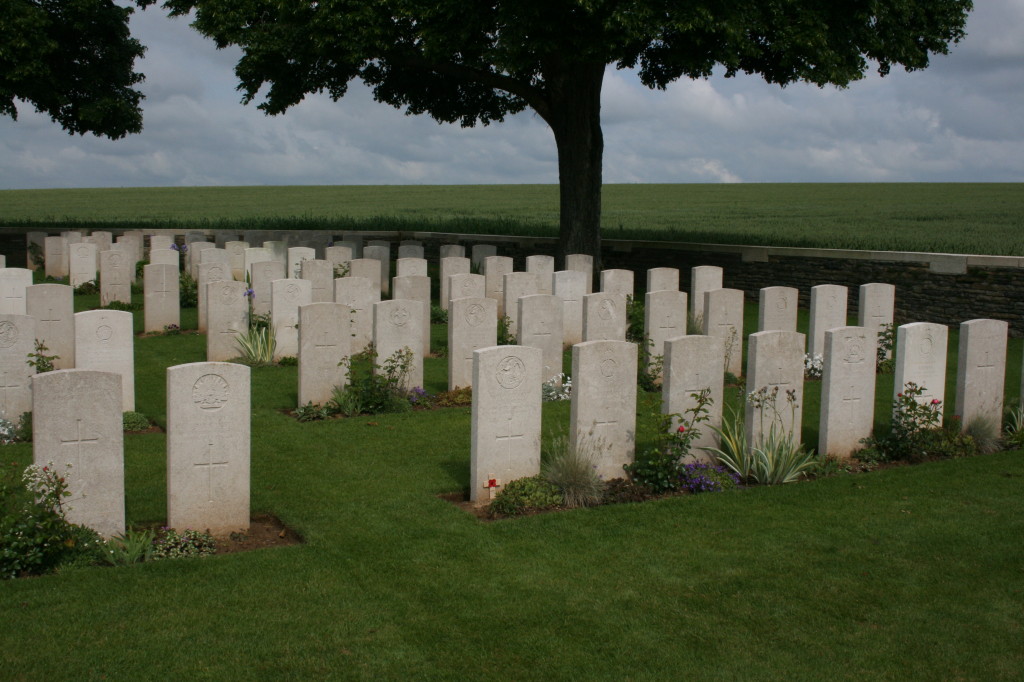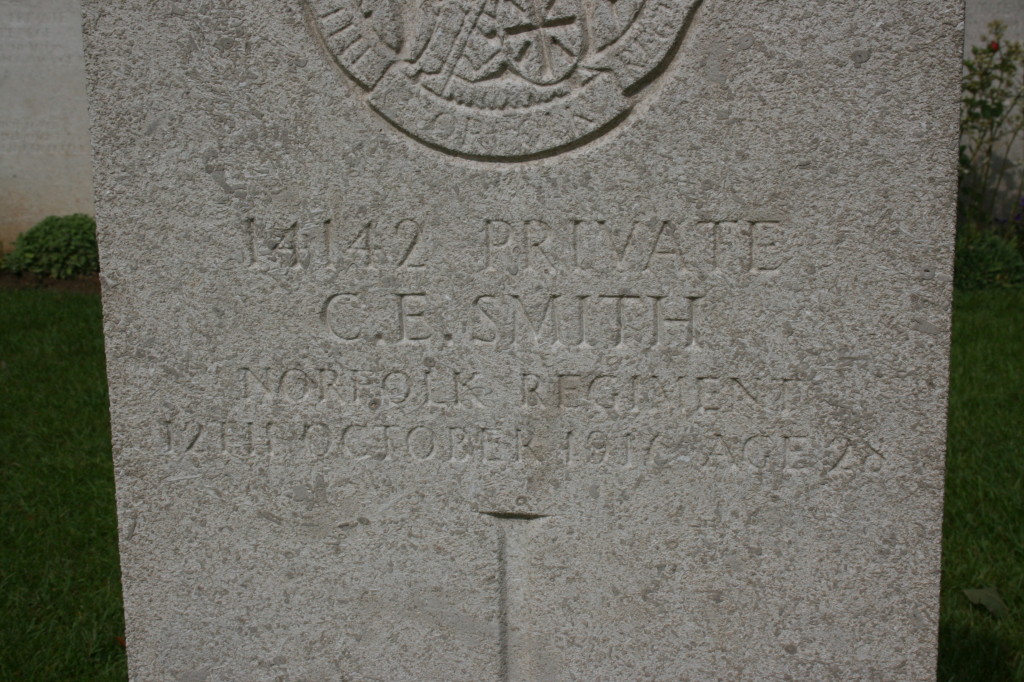Charles Ellis Smith was born in Fritton in 1888. He was the youngest child of John and Agnes Ann Smith. His eldest brother Horace was born in 1882, his sister Matilda in 1884 and his brother Ernest John in 1885. His father was an under gardener in Fritton.
By 1901 some of the family had moved to Saxlingham Green where John was employed as a gardener. Ernest was aged 16 years old and working as a farm labourer and Charles was still at school. Horace and Matilda were living with their uncle James Dixon in Islington. Matilda was working as a domestic servant and Horace for a railway company.
Charles became a footman. In 1911 he was working at Swinton Grange, near Malton in Yorkshire, one of seventeen staff. Swinton Grange was a large, grand, 36 roomed house owned by the Behrens family. They also had a house in London.
John and Agnes Smith were still living in Saxlingham but had moved to live in Belcombe Lodge on the street. John was a gardener working for the local doctor.
Charles joined the 3rd Battalion, Norfolk Regiment in Hammersmith on 3rd August 1914. He attested on August 31st 1914. He was 26 years and 10 months old. He was described as being of a pale complexion with grey eyes and fair hair. He was 5 feet 6 inches tall and weighed 9 stones 5 pounds. He had a scar on his right wrist and one on his inner right knee. He also had slight varicose veins but the army doctor considered them unlikely to cause any problems.
He was based in England until 6th October 1915. From 21st to 29th March 1915 he was in hospital with measles. He transferred to 7th Battalion Norfolk Regiment in October 1915 and arrived in France on 7th October 1915.
He became ill with influenza on 10th February 1916 and was eventually transferred to the 2nd Canadian General Hospital at Le Treport.
After treating him there for a fortnight they sent him back to England to the London General Hospital, Denmark Hill. There he was diagnosed as having bronchitis and remained in hospital for another 36 days until 6th April 1916.
He was posted back to France on 13th September 1916 and rejoined his battalion on 23rd September 1916. Less than three weeks later he was dead, killed in action.
From the beginning of July the British Army had been involved in what became known as the Battle of Attrition. They made repeated attacks on the German positions. The 7th Battalion, Norfolk Regiment was involved in these attacks. By 10th October the front line was at Gueudecourt. On 12th October 1916 the Norfolk Regiment was part of an attempt to take the German trenches known as Bayonet and Scabbard. They encountered heavy machine gun fire on both flanks and also found that the wire had not been cut. They were forced to retreat to trenches near Flers. Their casualties were high with 221 men being killed or wounded. Unfortunately Charles was one of the men killed.
The place where he was killed was not known but his family were told that his grave was in a cemetery near Gueudecourt , four and a quarter miles north west of Combles. They were later told that his body had been exhumed and reburied at Beaulencourt British Cemetery, Ligny-Thilloy, a village near Bapaume in northern France.
After the end of the war graves from neighbouring battlefields were concentrated in this cemetery. It is to be assumed that this was what happened to Charles Smith’s grave.
In February 1917 his effects were returned to his father, these included photographs. His father moved to live in Stoke Holy Cross.
Acknowledgements
Census records: 1871, 1881, 1891, 1901, 1911
UK soldiers who died in the Great War 1914-18
Papers from Saxlingham Nethergate Church Chest now deposited at Norfolk Record Office
British Army WW1 Service Records
British Army WW1 Medal Rolls Index Cards 1914-1920
www.throughtheselines.com.au/research/le-treport Photograph of 2nd Canadian Hospital.






Thank you for this tribute. I believe Charles Ellis Smith was my Great Great Grandfather’s (Jonathan Wright 1822-1904) grandchild.